
poēsís are the blooming of the blossom, the coming-out of a butterfly from a cocoon, and the plummeting of a waterfall when the snow begins to melt [1].
We help hospitals radically transform the healthcare environment.
Four sensory delivery rooms, in North Jutland Regional Hospital Hjørring (RHN), were furnished with multisensory digital artworks, to create an inspiring and safe environment for future births. Motivated by healing architecture [3], and an understanding of the significance of our physical surroundings [2, 3], the design of the delivery rooms can support natural childbirth while strengthening cultural- and self-perception. Nature plays a crucial role in our lives and self-perception, with an estimated quality to reduce bleeding and lower the risk of cesarean section [4]. Furthermore, it serves as a positive distraction to reduce stress, and pain management to promote natural childbirth [5, 7, 6]. Our experiences indicate that sensory delivery rooms can strengthen family formation by providing more focus on the partner and increasing user satisfaction, and autonomy [8].
“Sensory Delivery Room : Hjørring”, Obstetrics, 2021
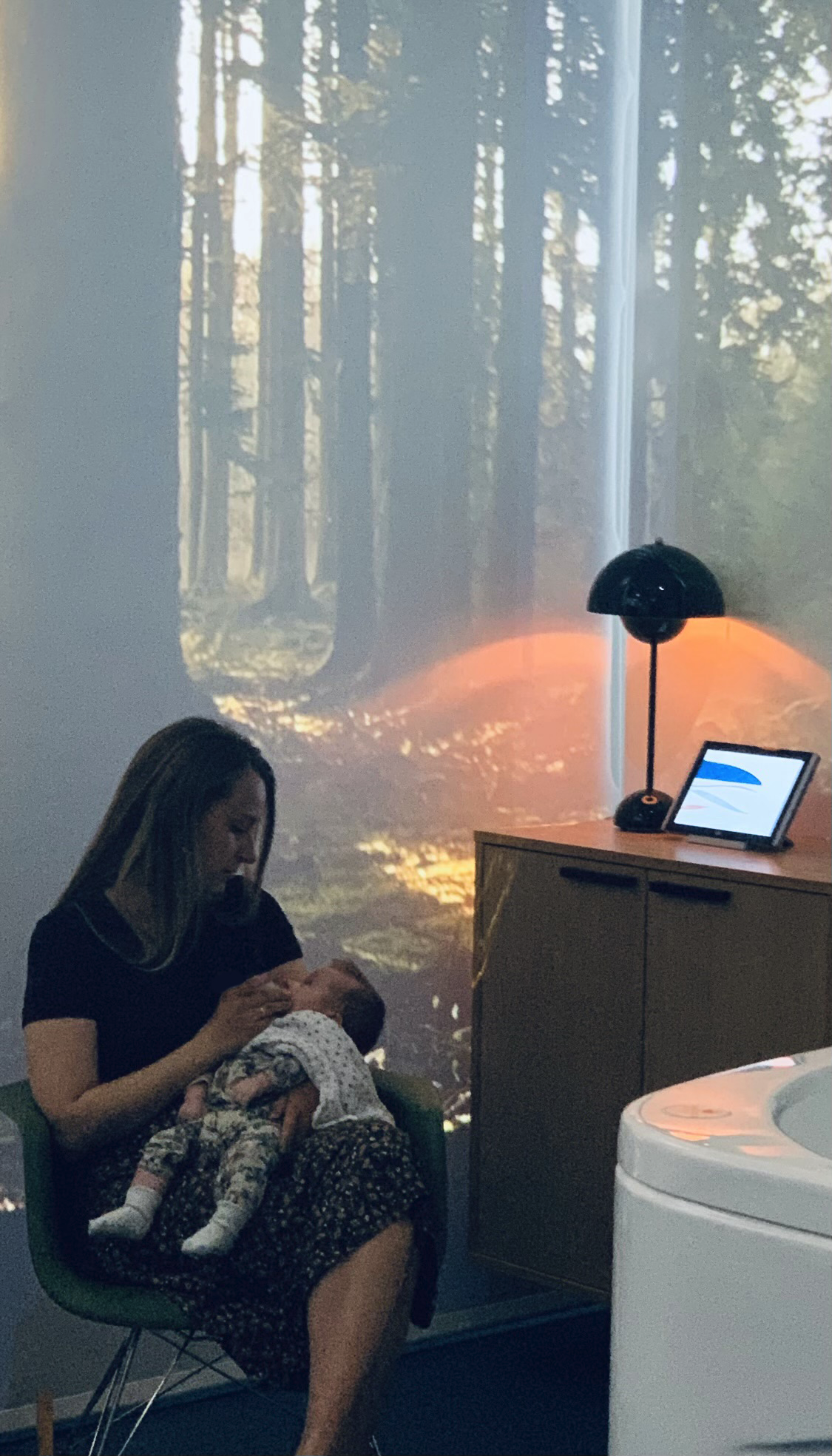
”The atmosphere is like an invisible cloud hanging in the room. It is radiated from the walls, objects, sounds, tone of voice… We decode it as feelings – which becomes emotions before thoughts.”
German Philosopher, Gernot Böhme [2]
“Architecture is a container of atmospheres. It affects our brains’ biology and shapes our well-being. Architects, designers, and artists can craft specific sensorial stimuli to improve people’s health while also building a more beautiful and sustainable world. In our projects, we work with crafting integrated sensory and site-specific artworks to support patients and health professionals’ specific needs and practices. We believe in strengthening our connection to nature by connecting the strings of recognizable moods and atmospheres in nature into the hearts of the hospitals, which in turn will render calming, meaningful, and even spiritual feelings.”
Architect and designer, Esben Bala Skouboe
”The Light”, Obstetrics, 2022
Can the space become a non-pharmacological instrument of care? Delirium represents a significant mental phenomenon with far-reaching implications for patients, their families, and healthcare professionals. It can be a traumatising experience, leaving enduring psychological imprints [9, 10]. Leveraging insights from the Health Evidence Network synthesis report 67 [16], studio poēsís endeavours to enhance and instigate the rehabilitation of mental health during and post-delirium, within the hospital environment. By exploring interventions involving strategic modulation of sensory stimuli, the physical environment can be harnessed as a non-pharmacological instrument. This particular case entails integrating a familiar domestic interior and a nature-inspired soundscape to evoke sensory reminiscences in patients [19].
Pilot: “Spatial instrument of care”, Department of Urology, 2023
In the Health Evidence Network Synthesis Report 67, WHO concludes how art and culture within the healthcare field are an effective, low-cost, and low-risk supplement to more biomedical treatment [16]. This conclusion is drawn from evidence from 3000 studies. WHO points out how art and culture are a non-pharmacological treatment that can have an effect psychologically, physiologically, socially, and behaviorally (ibid.). Their study calls for new knowledge that could close the Know-Do Gap between the domains of Arts and Health [17]
During the last 10 years, studio poēsís has developed tools and health-integrated artworks that bridge the two domains with tailored sensory spaces, rituals, sound designs and site-specific artworks. The innovation belongs to an interdisciplinary domain between health professionals and artists, to satisfy the needs of patients, relatives and staff in the ‘act of treatment’ and ‘act of care’.
Read more in Philosophy.
Pilot: “Ritual of remembrance”, Palliative Care Unit, 2023
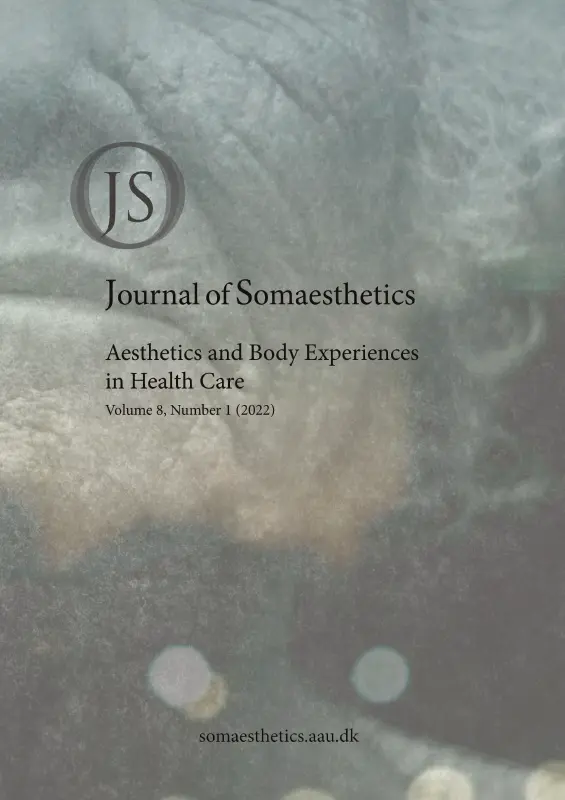
Crafting Atmospheres for Healthcare Design
This work conducted by Esben Bala Skouboe and Marie Koldkjær Højlund, published in the International Journal: ‘Buildings’ no. 13, 2023, contributes to the growing body of work conducted in the vicinities between well-being and biomedical treatments in healthcare.
”Urkraft” (primordial force), Obstetrics, 2021
The hospital serves as a venue for pivotal moments in life and provides a setting for professional care and highly specialized treatments in the pursuit of preserving life. However, the challenge lies in establishing a space that is both clinically effective and specialized while also offering support during life’s most profound tragedies.
“Caring place for stillbirths”, Obstetrics, 2021
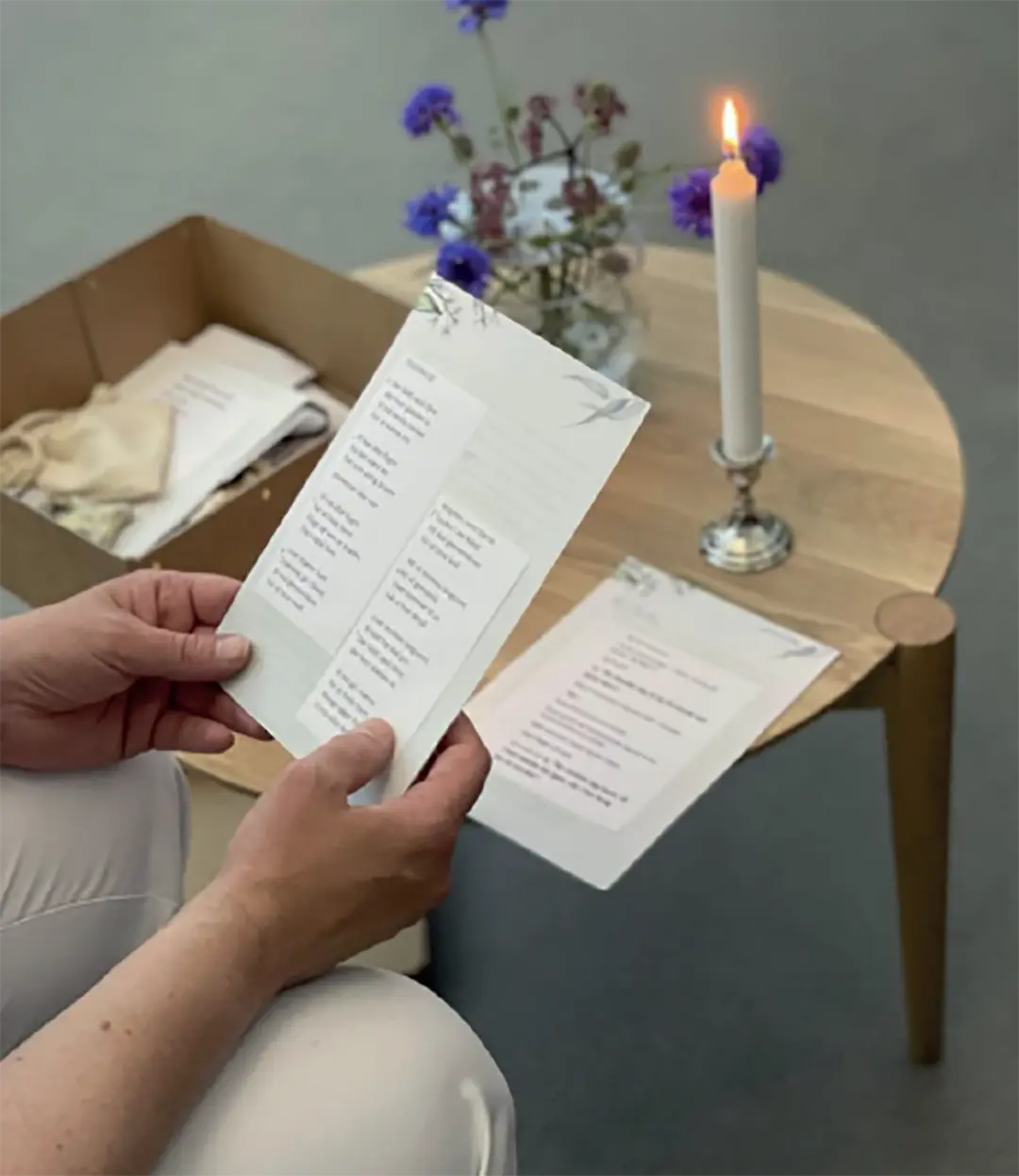
“The light”, is a caring ritual developed specifically for families with stillbirths. In the ritual, the midwife takes on the role of a host for the farewell, and through meaningful actions, stages a beautiful and resilient shared memory to support them through the grieving process. It enables the staff to create a dignified aesthetic framework for the event, which initiates the rehabilitation process already at the hospital at the exact moment.
“Caring place for stillbirths”, Obstetrics, 2021
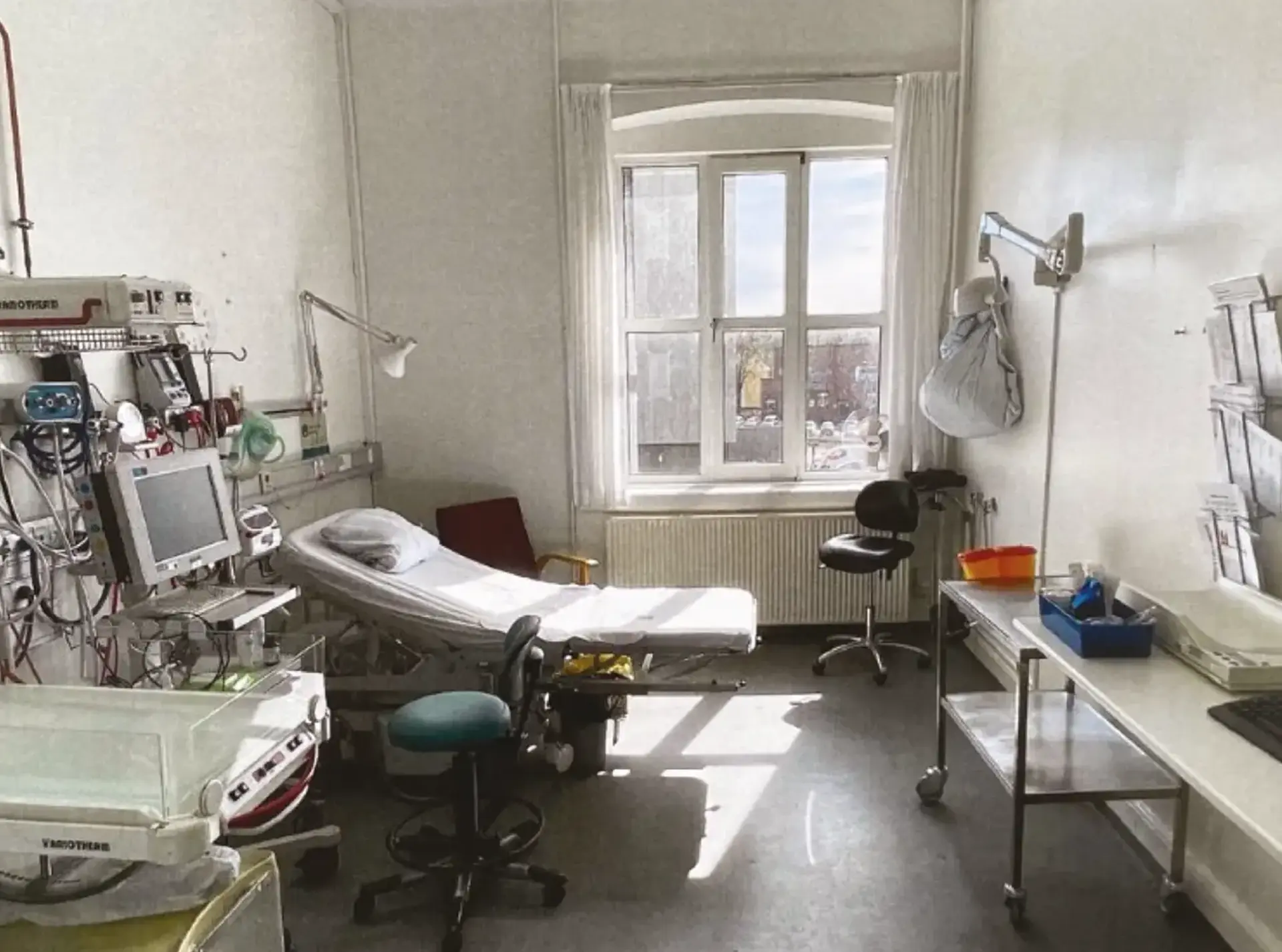
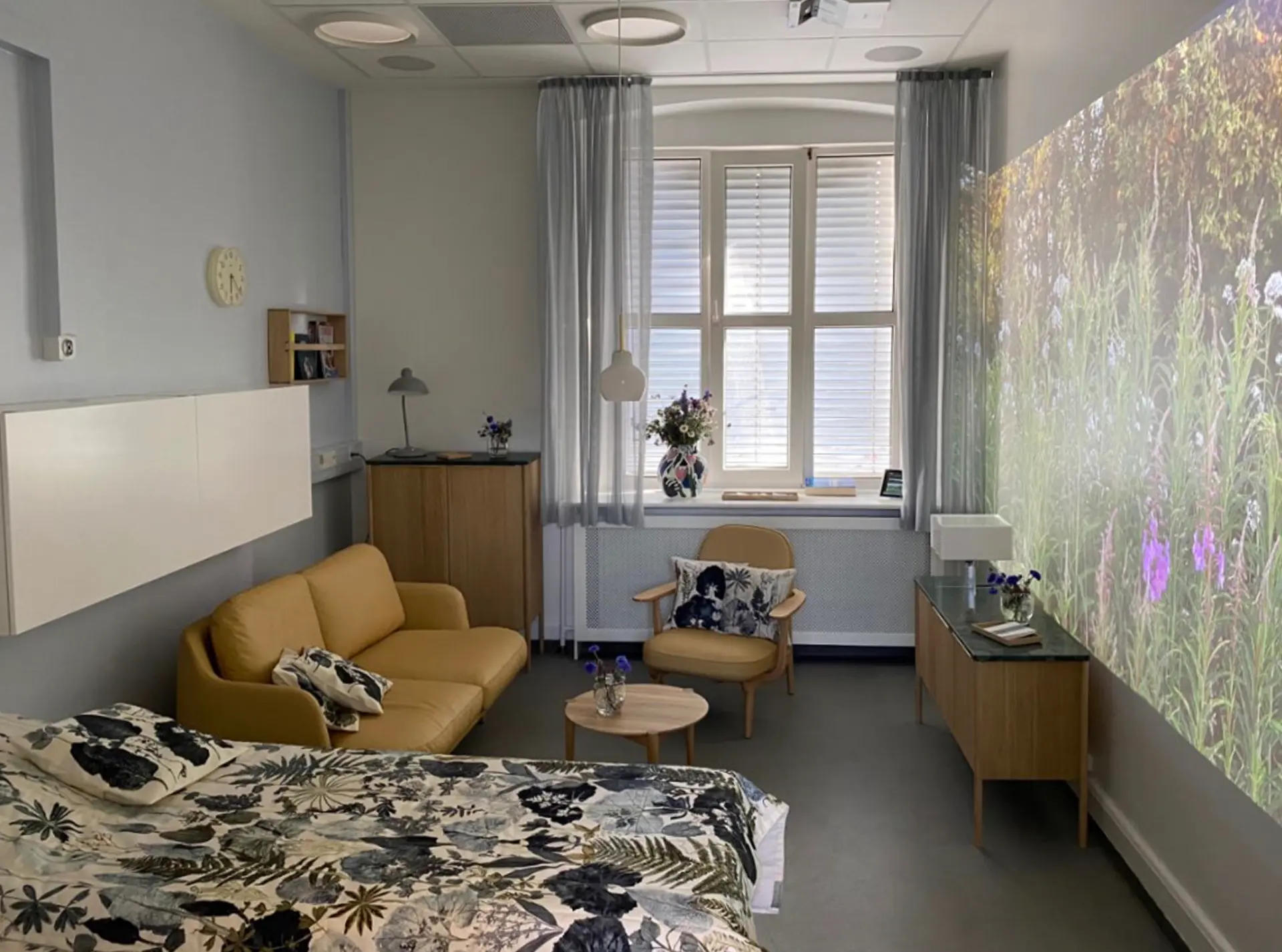
“Caring place for stillbirths”, Obstetrics, 2021
“It is not exactly the presence of a thing but rather the absence of it that becomes the cause and impulse for creative motivation.”
Ukraian sculpture, Alexander Archipenko [21]
“Velkommen til livet”, (Welcome to life), birth ritual, Obstetrics, 2021
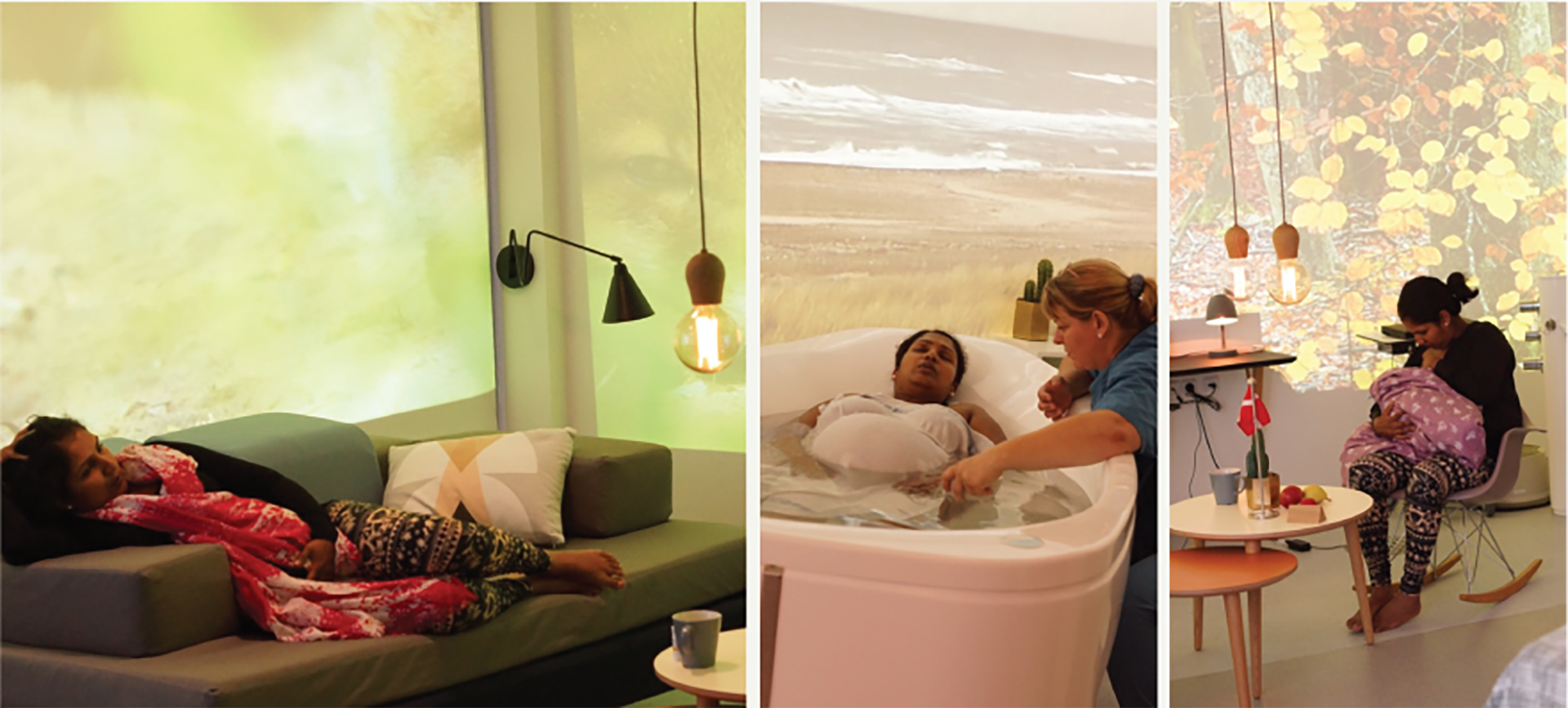
”This series of images captures the beauty of my wife giving birth to my daughter, Isabella. It stands as a pinnacle in my life’s journey, a testament to love’s transformative power. To me, this was one of the greatest moments in my life, and it embodies the very essence of the possible, a living testament to the miraculous.”
Architect and designer, Esben Bala Skouboe
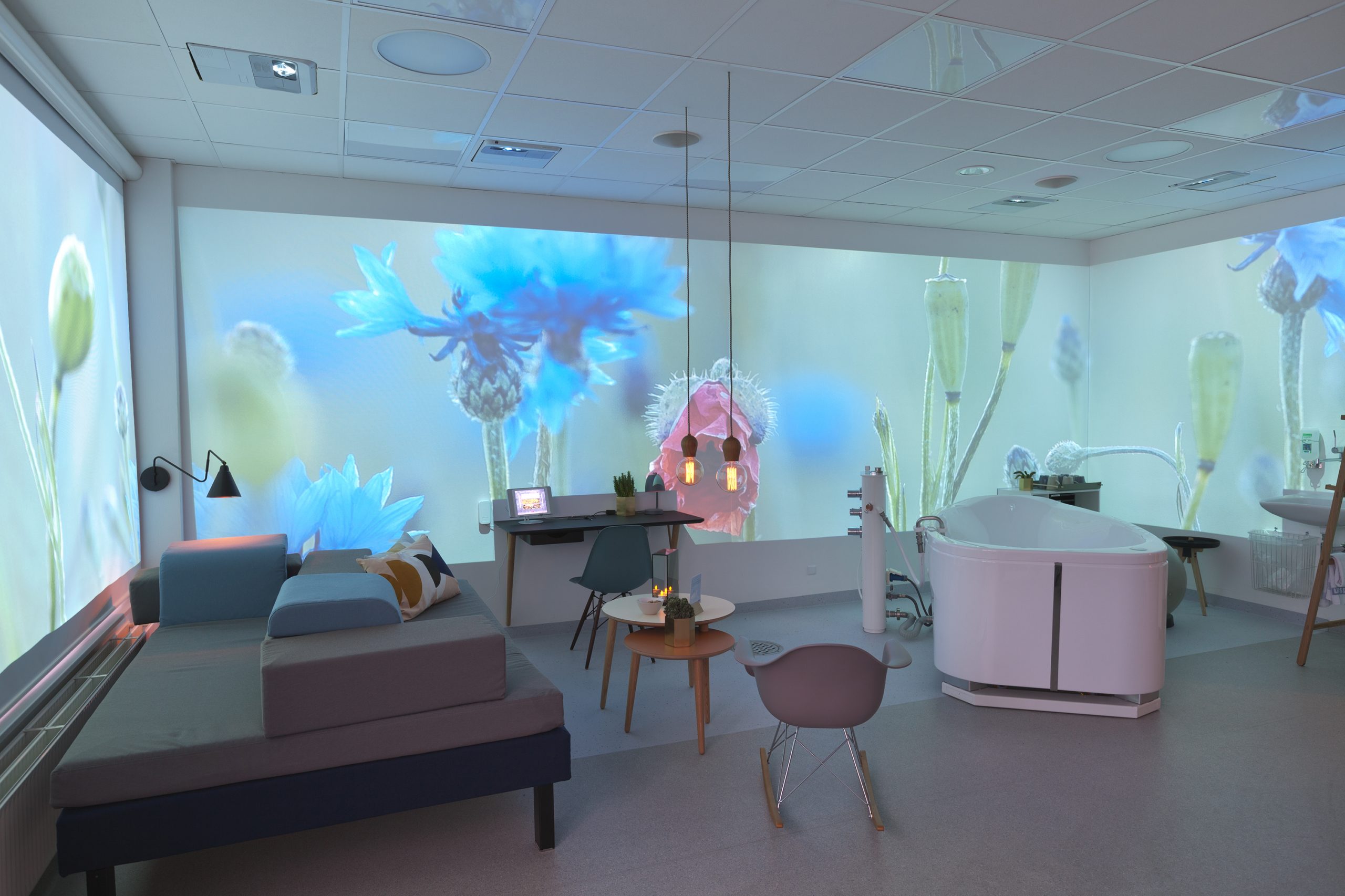
The “Future Delivery Room” in Herning holds a particularly great significance for studio poēsís as it marks the beginning of founder Esben Bala Skouboe’s involvement with the healthcare sector and the company’s creation. Specifically, it began when his wife and he welcomed their firstborn, Olivia, on July 1, 2014. This encounter was groundbreaking as it brought together aesthetic idealism and research with a clinical, highly efficient, and professional healthcare system. The project represents a pioneering approach to birthing environments, crafted as an innovative prototype guided by evidence-based healthcare design principles and aimed at enhancing the experience of childbirth through the promotion of oxytocin production.
Pilot: ”Future Delivery Room”, Obstetrics, 2015
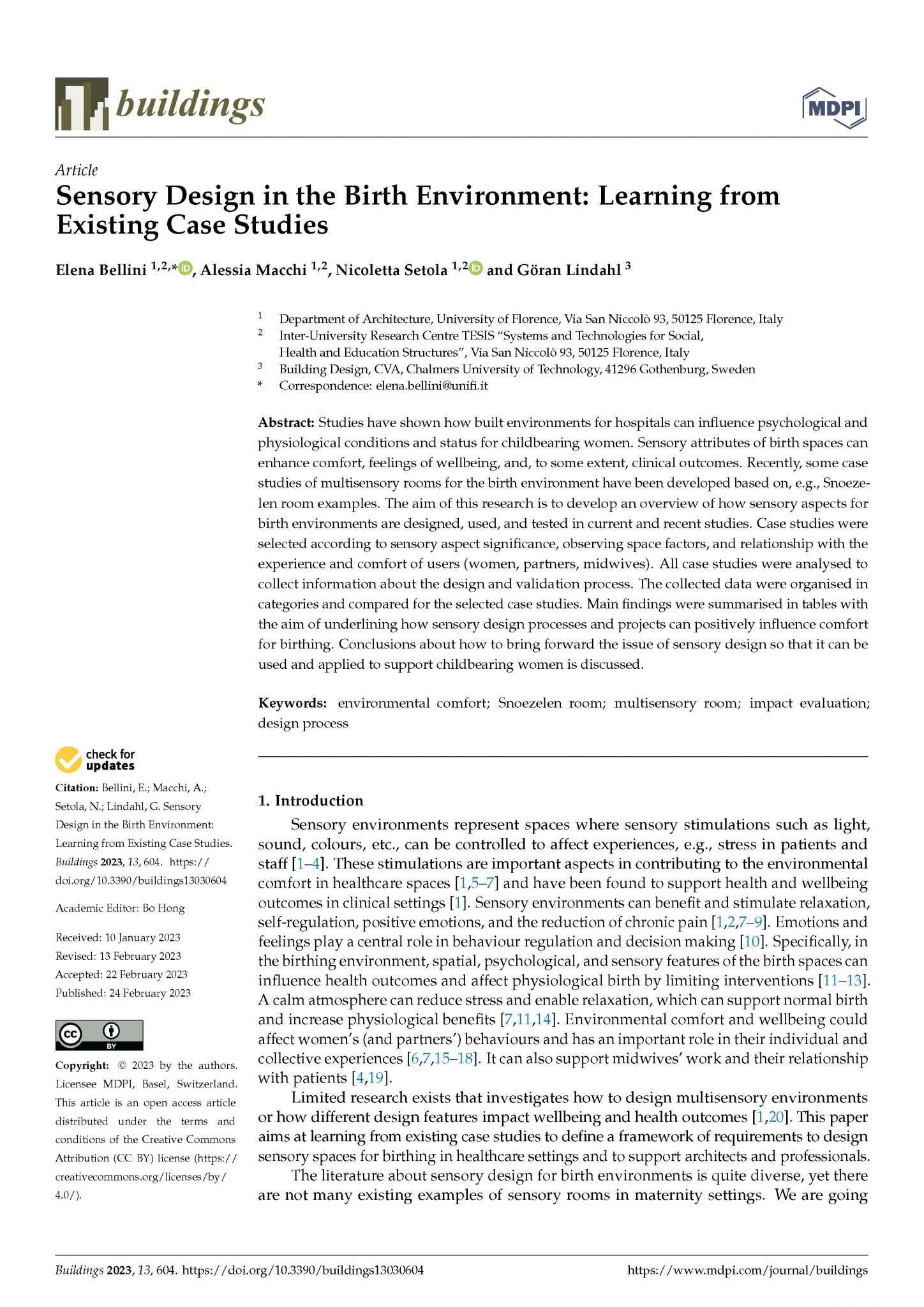
Sensory Design in Birth Environment: Leaning from Existing Case Studies.
Studies have shown how built environments for hospitals can influence the psychological and physiological conditions and status of childbearing women. Sensory attributes of birth spaces can enhance comfort, feelings of well-being, and, to some extent, clinical outcomes [22].
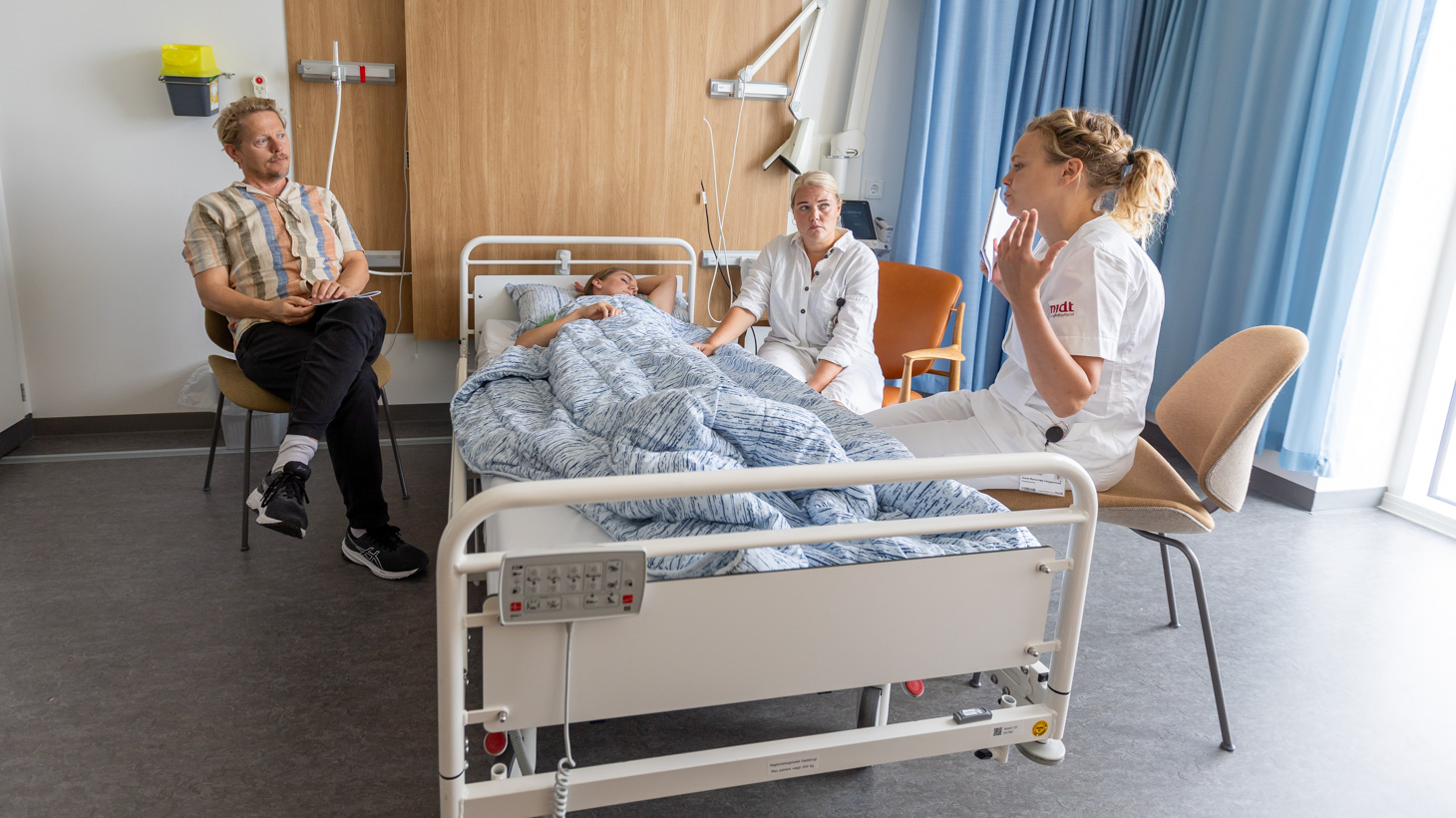
“Our grief is our own, but in poetry, we can build a bridge to an existential space that is larger than ourselves – a common space that cannot be described with words. It is our dream that these rituals can become a support and inspiration for families and the staff, who will come together to celebrate and honour the life that was.”
Director and actor, Thure Lindhardt
studio poēsís is a design studio specialized in somaesthetic art projects for the healthcare sector. The artworks are existential sensory pieces placed at the heart of the hospitals, supporting patients, staff, and relatives in life’s significant moments. The starting point is always the atmosphere of the space, and therefore, the studio has developed a model that combines multiple art forms in close collaboration with department staff in their creation. This interdisciplinary artistic practice is implemented with the understanding that each art form contributes existentially, addressing dimensions of life, and initiating strong collaborations between art and healthcare professionals.
Studio Poesis
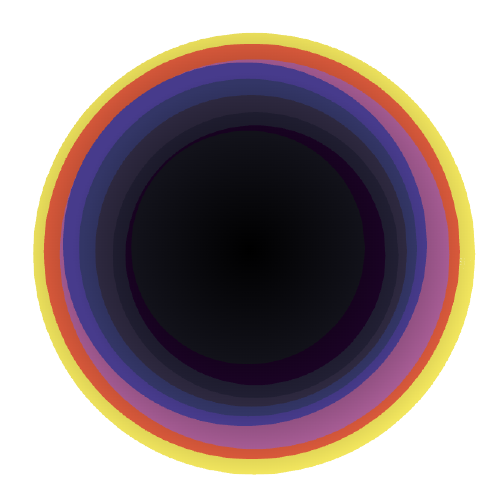
We use necessary cookies to make our site work. With your consent, we may also use non-necessary cookies to improve the user experience and analyze website traffic. By clicking “Accept”, you agree to our website’s use of cookies